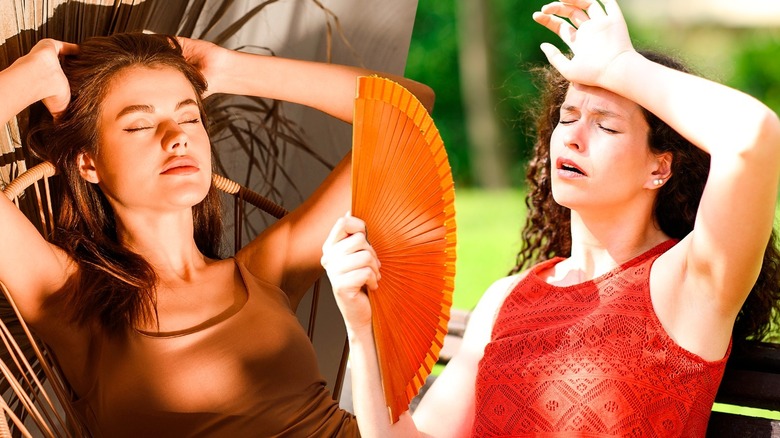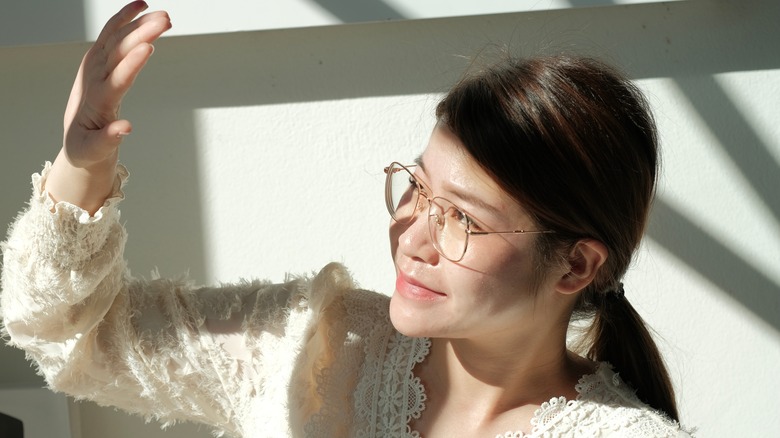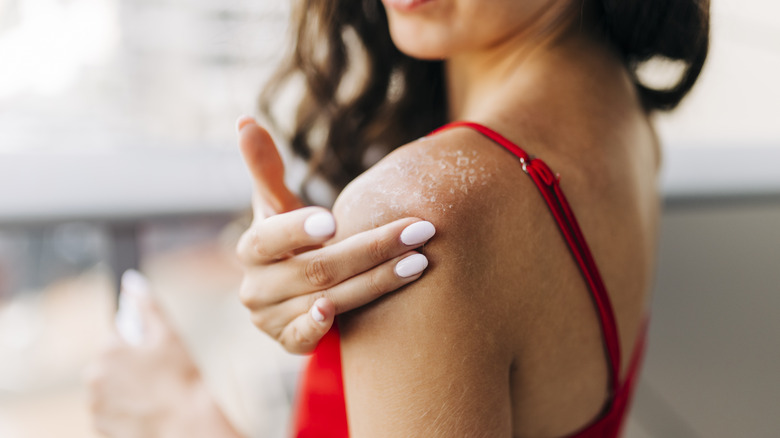Here's What To Know About The Difference Between UVA And UVB Rays
Spending time outdoors to soak up the sun has proven benefits for your mental and physical well-being, per Healthline. As with many of life's simple pleasures, however, sun exposure is recommended in moderation due to the potential for sun spots, cancer, and premature aging. The sun emits a variety of rays, including visible light, infrared, and ultraviolet, but experts are largely concerned with ultraviolet rays, according to the American Cancer Society. Unlike visible or infrared rays, ultraviolet rays carry enough energy to damage the skin, which is why sunscreen products specifically focus on blocking ultraviolet light.
Aside from preventing sunburns, sunscreen also prevents sun spots, premature aging, and skin cancer (via Healthline). Sunscreen works by targeting two types of ultraviolet rays: ultraviolet A (UVA) and ultraviolet B (UVB). The difference between UVA and UVB rays lies in their respective wavelengths, which influence the way they affect the skin. UVB rays are shorter and lead to sunburns, while UVA rays have a longer wavelength on the electromagnetic spectrum, which means they cause skin damage on a deeper level.
Ultraviolet A (UVA) rays
Ultraviolet A (UVA) rays make up 95% of the sun's ultraviolet rays and penetrate the inner cells of your skin's top layer (via Healthline). Unfortunately, your skin is vulnerable to UVA exposure all year round, even through most windows and under cover of cloudy skies. Thankfully, applying sunscreen will protect your skin from over-exposure and reduce the harmful effects of UVA rays. Without sun protection, you risk premature aging as these rays damage the collagen in your skin, leading to wrinkles and a loss of skin elasticity, per the Skin Cancer Foundation. UVA rays also cause skin darkening and genetic damage, increaing the risk of skin cancer.
"We can prevent up to 80 percent of skin [aging] by using daily sunscreen correctly, all year round," Dr. Sam Bunting shares in an interview with Vogue UK. Though, many sunscreens do not actually protect you from UVA rays and only block UVB rays. For this reason, be sure to use sunscreen with broad-spectrum protection to safeguard against both UVB and UVA rays.
Ultraviolet B (UVB) rays
Similar to UVA rays, UVB rays also cause skin darkening and tanning. However, UVB rays only penetrate the uppermost layer of your skin. "UVB does not penetrate as deeply as UVA, but it can wreak havoc on the top layers of your skin," explains Saira George, M.D., a dermatologist at MD Anderson Cancer Center. While UVB rays have a shorter wavelength and only 5% of these rays manage to penetrate through the ozone layer, they contain higher energy levels, which means they are equally harmful. In fact, UVB rays are responsible for severe sunburns, DNA damage, and blistering, per Healthline. In combination with UVA rays, UVB also plays a role in skin cancer formation.
Between the two types of ultraviolet rays, one is not more dangerous than the other. They both cause skin damage, so you should use daily sun protection. This especially applies if your skin is fair, prone to burning, or you have a history of skin cancer.


